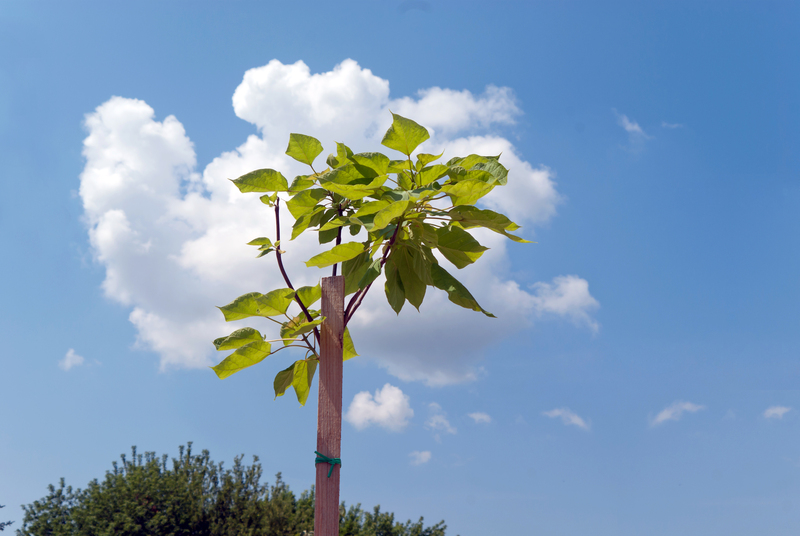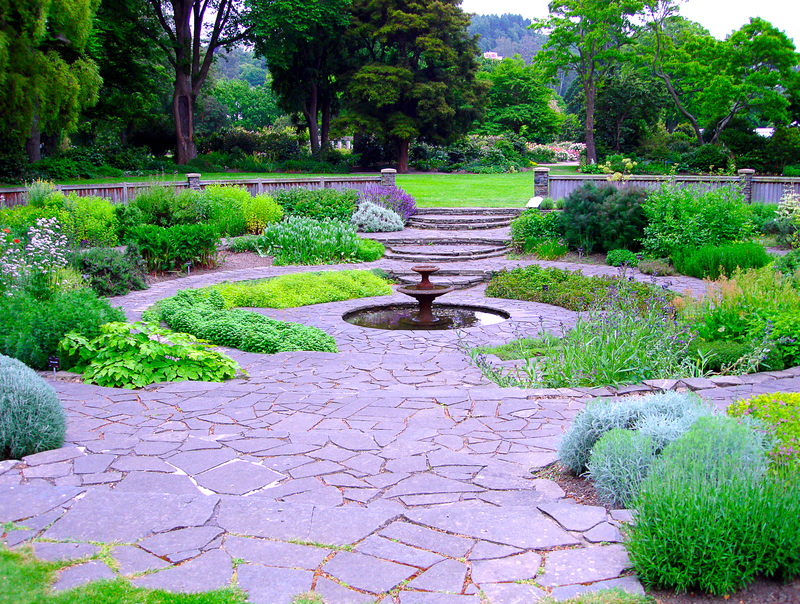Crafting the Ultimate Herb Retreat in Your Garden
Posted on 09/09/2025
Crafting the Ultimate Herb Retreat in Your Garden
Are you dreaming of a lush, fragrant herb retreat in your garden? Picture yourself sipping herbal tea surrounded by vibrant green leaves, bees humming, and the fresh aroma of basil, mint, and rosemary perfuming the air. Whether you have acres of land or a small urban backyard, transforming your outdoor space into a personal herb sanctuary is not only possible--it's rewarding, relaxing, and incredibly practical.

Why Create a Garden Herb Retreat?
- Health Benefits: Homegrown herbs are fresher, more potent, and organic, offering maximum flavor and medicinal qualities.
- Sustainability: Reduces your carbon footprint by minimizing store-bought packaging and transport waste.
- Well-Being: The act of gardening reduces stress, boosts mood, and provides a meditative escape from daily life.
- Beauty and Biodiversity: Herbs attract pollinators and add year-round beauty to your garden space.
- Versatility: Use your harvest for cooking, teas, remedies, or natural crafts for the home.
A thoughtfully planned garden retreat with herbs can be a lifestyle transformation--a space for healing, creativity, and connection to nature.
Planning Your Garden Herb Retreat
Choosing the Best Location
- Sunlight: Most culinary and medicinal herbs require at least 6 hours of sunlight per day. Choose a south-facing spot if possible.
- Accessibility: Place your herb retreat near the kitchen for easy access, or in a quiet corner for a more reflective escape.
- Soil Quality: Ensure the soil is well-draining. If not, consider raised beds or container gardens as alternatives.
Design Inspirations for Your Herb Enclave
Designing your herbal retreat garden is a creative journey. Think beyond simple rows--envision winding paths, cozy seating, and the melodic trickle of a water feature.
- Cottage Herb Garden: Embrace informality with a mix of perennial and annual herbs mingling amid flowers.
- Formal Potager: Use geometric beds or raised planters, edged with brick or boxwood, for a traditional European feel.
- Zen-Inspired Herb Retreat: Arrange herbs around stones, sand, and minimalist pathways for a tranquil ambiance.
- Vertical Herb Gardens: Perfect for small spaces--a living wall of fragrant herbs can provide privacy and beauty.
Consider combining structures like pergolas, trellises, or lattices with climbing herbs (e.g., hops, climbing nasturtium) for visual intrigue.
Selecting the Best Herbs for Your Retreat
Classic Culinary Herbs
- Basil: An aromatic staple for salads, pesto, and Italian cuisine.
- Rosemary: Woody evergreen, perfect for grilling and roasting dishes.
- Thyme: Delicate leaves that jazz up meats, eggs, and vegetables.
- Oregano: Essential for Mediterranean recipes.
- Parsley: Versatile and packed with vitamins.
Medicinal and Wellness Herbs
- Lavender: Soothing in teas and sachets; attracts pollinators.
- Chamomile: Calming flowers for tea and skincare remedies.
- Lemon Balm: Uplifting, lemon-scented, and calming for teas.
- Echinacea: Renowned for immune-boosting effects.
- Sage: Antimicrobial and ideal for respiratory wellness.
Specialty and Exotic Herbs
- Holy Basil (Tulsi): Celebrated in Ayurveda for adaptogenic properties.
- Lemongrass: Adds refreshing zest to drinks and curries.
- Vietnamese Coriander: Unique flavor for Southeast Asian cuisine.
- Mojito Mint: Perfect for cocktails and summer beverages.
Choose a blend tailored to your cooking tastes and wellness interests. For a multi-sensory experience, mix fragrant, edible, and ornamental varieties throughout your herb garden retreat.
Soil Preparation and Planting Techniques
Building Rich Garden Soil
The foundation of a flourishing herb retreat garden lies in healthy, living soil. Here's how to prepare:
- Test your soil with a simple soil-testing kit to assess pH and nutrient content.
- Add organic compost to enrich texture and introduce beneficial microbes.
- Ensure good drainage by mixing in sand or horticultural grit if your soil is heavy or clay-based.
- Apply a layer of mulch, such as straw or bark, to retain moisture, regulate temperature, and deter weeds.
Planting and Spacing Tips
- Follow spacing recommendations: Herbs like basil prefer to be crowded, while sage and rosemary need space for good air circulation.
- Group herbs with similar water and sunlight needs together for easy maintenance.
- Mix annuals with perennials for year-round interest.
- Incorporate companion planting--for example, basil alongside tomatoes boosts both plants' vigor.
If you have limited space, use herb planters or vertical containers. These are perfect for patios, balconies, or tight garden nooks.
Adding Retreat Features: Furniture, Paths, and Decor
Comfortable Seating Nooks
- A bench or hammock under a shade tree invites relaxation.
- Rustic log stools or mosaic-topped tables add character.
- Arrange seats to savor morning sunshine or sunset light in your herbal oasis.
Inviting Pathways
- Create meandering paths lined with fragrant herbs such as thyme, chamomile, or creeping rosemary for a sensory journey.
- Stepping stones, brick, or gravel keep feet dry while guiding visitors through your garden retreat.
Decorative Touches
- Wind chimes, bird baths, or water fountains add soothing sounds.
- Decorative herb markers, chalkboard signs, or sculptural elements personalize your space.
- Soft fairy lights or lanterns create magical ambience for evening gatherings.
Blend functionality with personal taste to make your herb garden retreat an extension of your home and spirit.
Caring for Your Herb Sanctuary
Watering Strategies
- Herbs generally prefer moist, not soggy, soil. Water deeply but infrequently to develop strong roots.
- Mulching reduces evaporation and keeps weeds at bay.
- In containers, check soil daily--herbs in pots dry out faster.
Feeding and Pruning Your Herbs
- Feed lightly with organic fertilizer in spring and midsummer.
- Pinch off flower buds to extend leaf production (unless harvesting edible flowers).
- Regularly harvest to stimulate new growth and prevent legginess.
- Cut back woody perennials like rosemary and lavender after flowering.
Pest and Disease Management
- Encourage beneficial insects by planting pollinator-friendly flowers.
- Remove diseased leaves promptly to prevent spread.
- Use natural repellents like neem or insecticidal soap if pests persist.
With thoughtful care, your herbal garden retreat will thrive season after season.
Harvesting and Using Your Herbs
The Art of Harvesting
- Harvest in the morning for peak flavor and essential oils.
- Use sharp scissors or pruners to prevent tearing stems.
- Take only one-third of growth at a time to ensure plant health.
Storing and Preserving Herbs
- Dry bundles of rosemary, thyme, oregano, or sage by hanging them upside-down in a dark, dry space.
- Freeze tender herbs like basil, parsley, and cilantro in olive oil or butter for easy use.
- Create herbal vinegars, infusions, or syrups for culinary exploration or gift-giving.
Creative Uses for Your Homegrown Herbs
- Freshen up your meals with snipped herbs as vibrant garnishes.
- Blend herbal teas, custom spice rubs, or salad dressings.
- Make natural remedies like salves, bath soaks, or facial steams.
- Craft herb wreaths or sachets for beautiful, aromatic decor.
Your garden herb sanctuary will reward you with both beauty and bounty--enriching your kitchen, health, and home.
Inviting Wildlife and Enhancing Biodiversity
To truly craft the ultimate herb retreat, welcome local wildlife. Birds, bees, butterflies, and beneficial insects all play crucial roles in a balanced garden ecosystem.
- Plant pollinator-friendly flowers alongside your herbs--try borage, calendula, and echinacea.
- Provide shallow dishes of water and flat stones for bees to rest on.
- Keep a small log or rock pile as shelter for helpful critters such as ladybugs and toads.
- Avoid harsh chemical fertilizers and pesticides to maintain ecological harmony.
Seasonal Considerations and Rotational Planting
Year-Round Herb Enjoyment
- Grow evergreen herbs (like rosemary and thyme) for winter interest and structure.
- Sow cold-hardy annuals (parsley, cilantro) in early spring and late summer for continuous harvest.
- Move tender herbs indoors or to a greenhouse as the weather cools.
Rotational Planting
- Change your planting layout annually to prevent soil-borne diseases.
- Alternate heavy feeders (basil, parsley) with light feeders (thyme, oregano) to sustain soil fertility.
Tips for Small Spaces and Urban Herb Gardens
Short on space? You can still create a cozy herb garden retreat in an apartment courtyard, balcony, or porch. Here's how:
- Use tiered or stacked planters to maximize vertical growing area.
- Hang baskets with trailing herbs such as oregano, thyme, or marjoram.
- Install a sunny windowsill herb garden indoors for year-round greenery.
- Combine culinary herbs with edible flowers like nasturtiums for beauty and taste.

Embracing the Herb Retreat Lifestyle
Once your garden herb retreat is established, make it a cherished part of your daily life. Begin mornings with a cup of fresh mint or lemon balm tea amidst the dew-glistened leaves. Host friends for herbal-themed brunches or an evening of aromatic cocktails. Teach kids the fun of gardening and the flavor of edible plants. Let your oasis nurture your mind, body, and spirit.
- Practice mindfulness: Take time to observe the textures, scents, and wildlife in your sanctuary.
- Journal your journey: Track herb growth, kitchen experiments, and the changing seasons for future inspiration.
- Share your abundance: Gift bunches of herbs or homemade items to neighbors and friends.
Conclusion: Your Botanical Haven Awaits
Crafting the ultimate herb retreat in your garden is an act of love--towards yourself, your home, and the environment. With thoughtful planning, diverse plantings, and a touch of creativity, you'll nurture a space that delights the senses, supports well-being, and invites nature's magic into your everyday life. Start small or dream big; your herbal paradise awaits just beyond your doorstep.
Begin your journey today and cultivate an herb garden sanctuary that nourishes body, mind, and soul.

